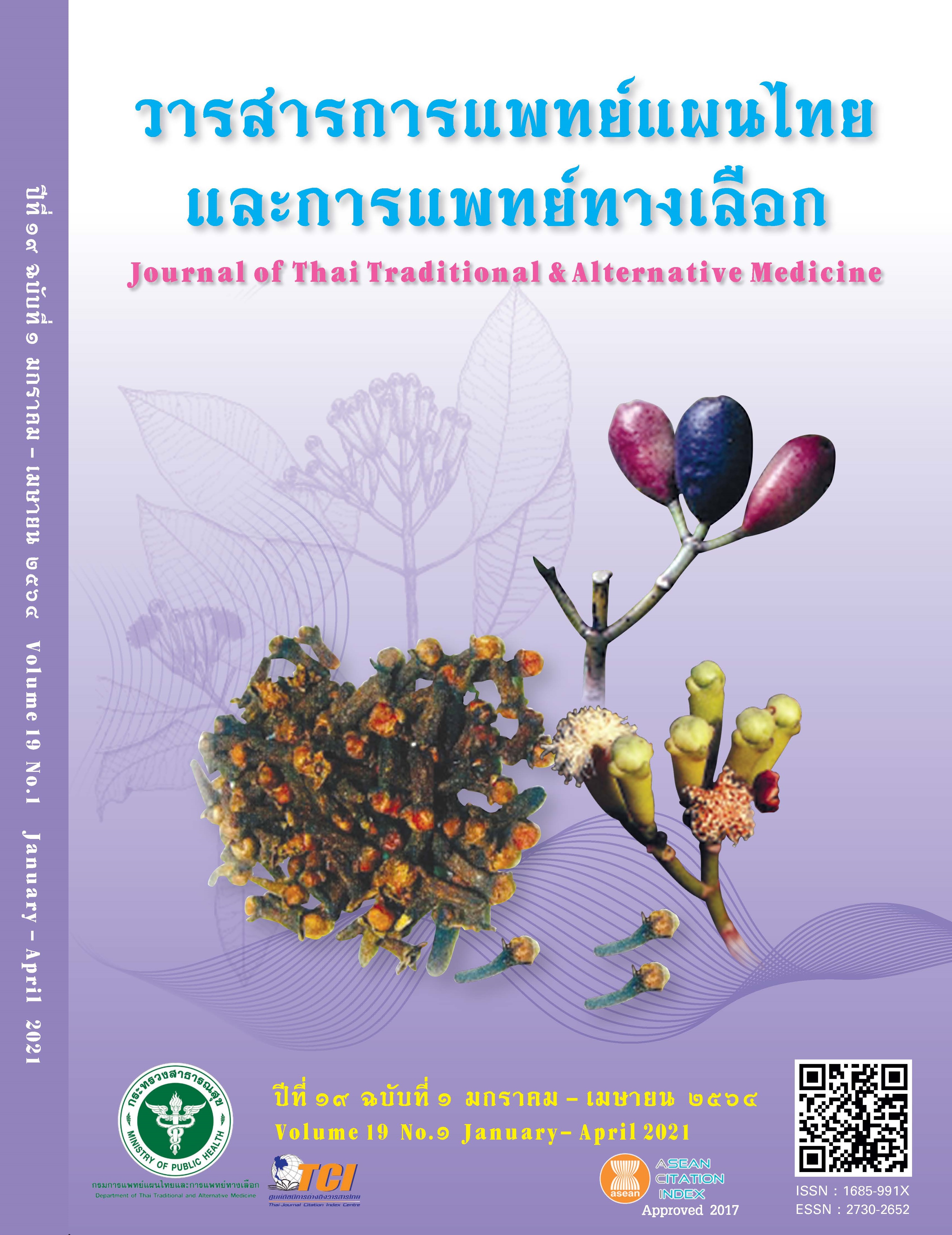Maneevej Therapy for Newborn Brachial Plexus Birth Palsy: A Case Report
Main Article Content
Abstract
Brachial plexus birth palsy is a serious complication of birth injury in newborns whose delivery involved shoulder dystrocia and risk for medical prosecution due; and some patients do not fully recover from motor dysfunction especially in the upper extremities normally used for daily routines. We reported on one newborn female case with Erb’s palsy who had received occupational and electrical stimulation therapies. As the 6-month-old patient was not able to recover from her motor dysfunction, her parents desired to get her treated with Maneevej therapy, a Thai traditional body balancing exercise technique. The patient was followed up monthly for structure imbalance correction with Maneevej and clinical re-evaluation. After 4 years of in-expensive Maneevej therapy, the patient’s clinical conditions for shoulders, arms and fingers’ functions improved to nearly full recovery. That has been achieved with trained/skilled medical personnel in the Maneevej therapy technique and cooperation of her parents in following medical advice.
Article Details
References
Abid A. Brachial plexus birth palsy: management during the first year of life. Orthopaedics & Traumatology,
Surgery & research2016; 102:S125-132.
Frade F, Gómez-SalgadoJ, Jacobsohn L, Florindo-Silva F. Rehabilitation of neonatal brachial plexus palsy:
integrative literature review. J Clin Med. 2019;980:1-12.
Raducha JE, Cohen B, Blood T, Katarincic J. A review of brachial plexus birth palsy: injury and rehabilitation. Rhode Island Medical Journal. 2017;100:17-21.
Andersen J, Watt J, Olson J, Van Aerde J. Perinatal brachial plexus palsy. Paediatrics & child
health. 2006;11(2):93–100.
Chen L, GuY D, HuS N, XuJ G, Xu L,Fu Y. Contralateral C7 transfer for the treatment of brachial plexus root avulsions inchildren: a report of 12 cases. The Journal of hand surgery. 2007;32(1):96–103.
Graham JM. Brachial plexus palsy. in: Graham JM, editor. Smith’s recognizable patterns of human deformation. 3rd ed. Philadelphia: Elsevier Health Sciences; 2007.p. 89–92.
Al-Qattan MM, Clarke HM, Curtis CG. Klumpke’s birth palsy: does it really exist?. J Hand Surg Br. 1995;20(1):19–23.
Sjöberg I, Erichs K, Bjerre I. Cause and effect of obstetric (neonatal) brachial plexus palsy. Acta Paediatr Scand. 1988;77(3):357–64.
Pondaag W, Malessy M, van Dijk JG, Thomeer R. Natural history of obstetric brachial plexus palsy: A systematic review. Dev Med Child Neurol. 2004;46:138–44.
Greenwald AG, Schute PC, Shiveley JL. Brachial plexus birth palsy: a 10-year report on the incidence and prognosis. J Pediatr Orthop. 1984;4:689–92.
Terzis JK, Papakonstantinou KC. Management of obstetric brachial plexus palsy. Hand Clin. 1999;15:717–36.
Ningsanond N, Huagspreugs K. Maneevej new paradigm in healthcare. Songkla: Neopoint(1995); 2017. (in Thai)
Ningsanond N, Chirachanchai O. Maneevej textbook challenging knowledge in medical science. Phetchabun: DD Printing Phetchabun; 2017. (in Thai)
Watcharasin K, Chantharangsikun P. Maneevej for body
balancing and ethics development in Thai children.
Surat Thani: Udomlarpprinting; 2015. (inThai)
Nath RK, Somasundaram C, Melcher SE, Bala M, Wentz MJ. Arm rotated medially with supination—the ARMS variant: description of its surgical correction. BMC Musculoskelet Disord. 2009;10:32. doi: 10.1186/1471-
-10-32.


